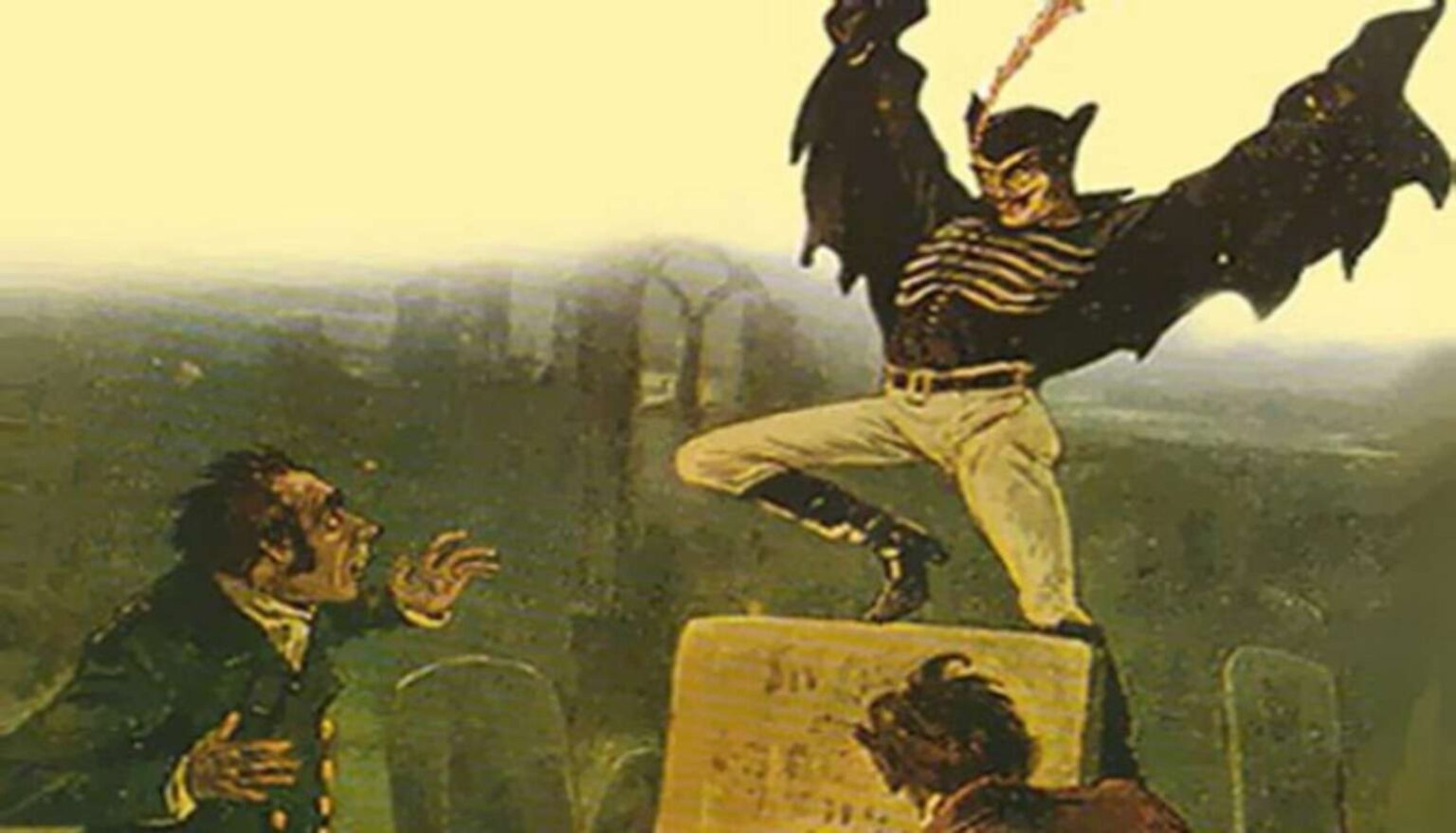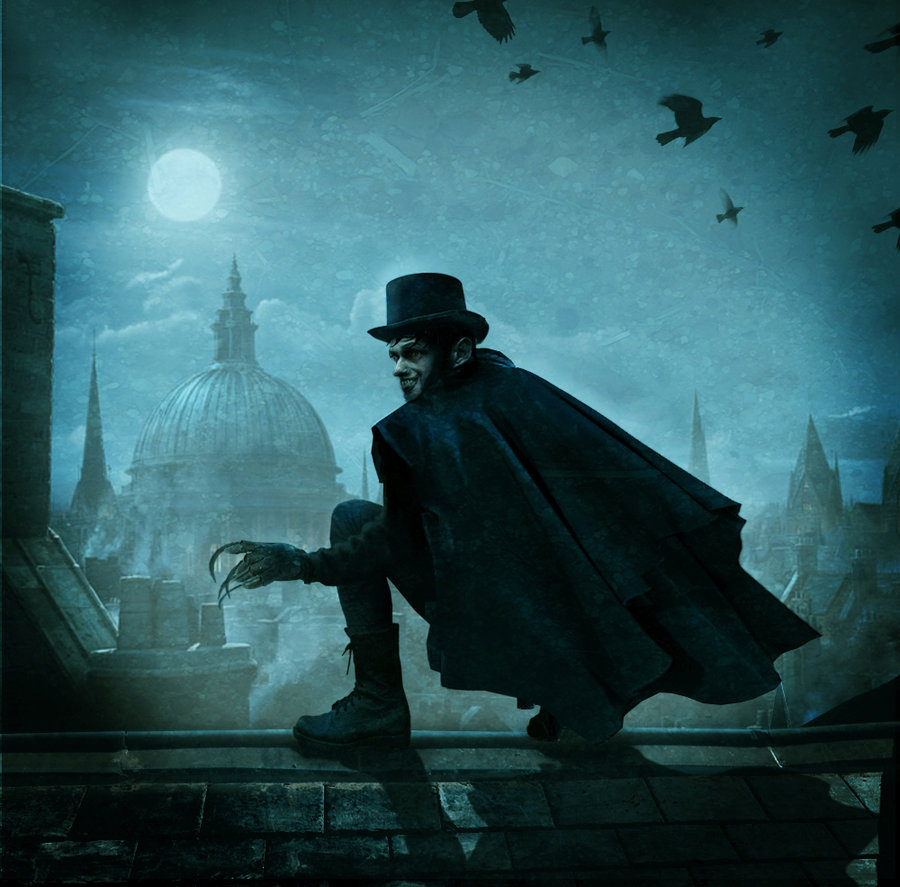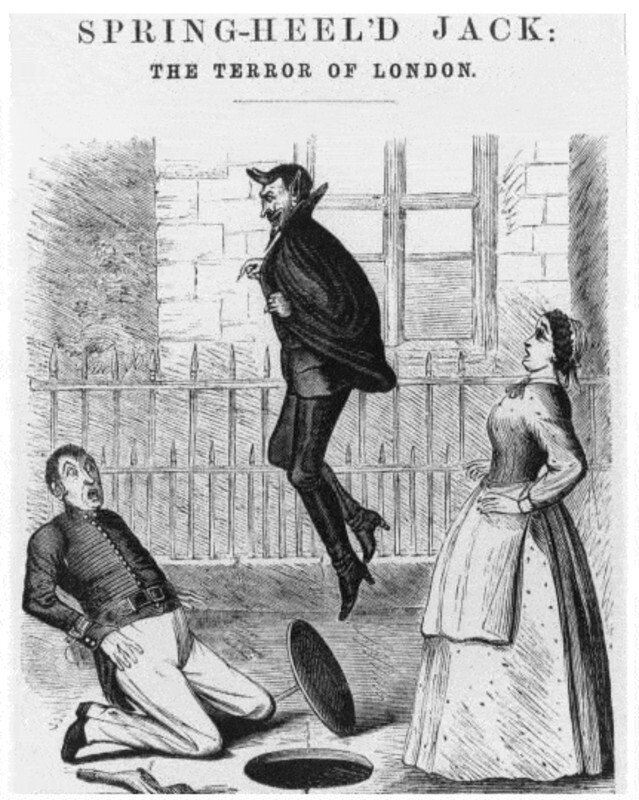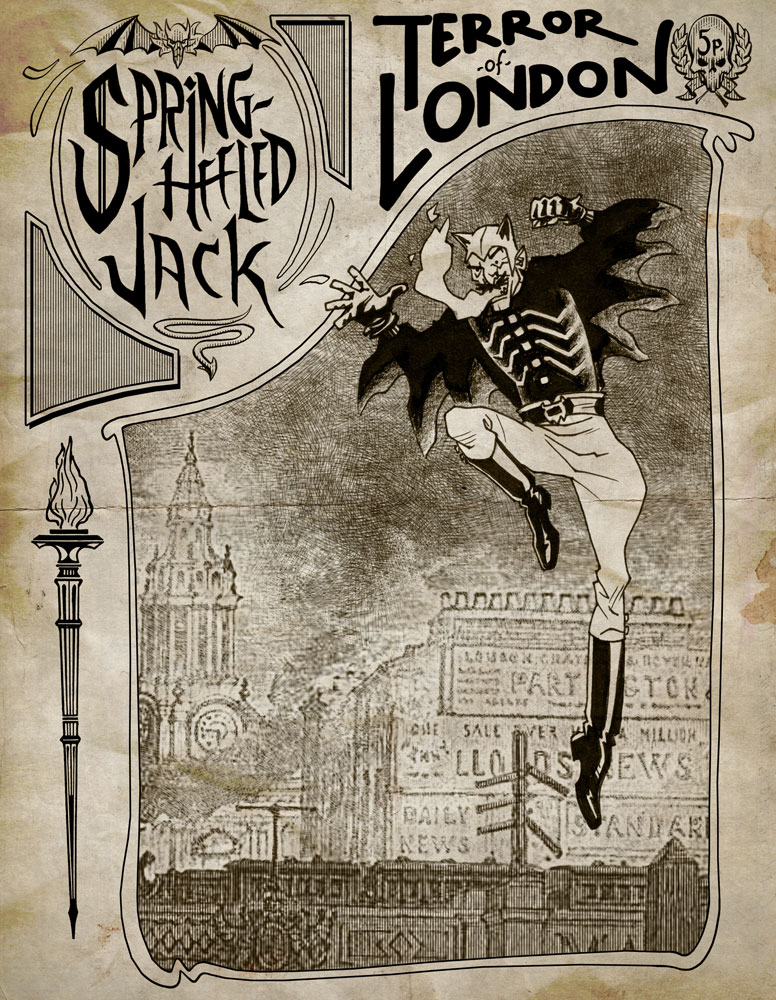
Who’s Spring Heeled Jack? Learn more about the English folklore legend
Many people don’t realize that 19th century London had a dark side. Underneath the glitz & glamour of ball gowns, gentlemen, and royal palaces, the Victorian city had much to fear. Tales of violent robberies, mysterious sewers, and street crime gripped Londoners in terror.
Often the line between man & myth blurred in this era, giving way to creative literature that was heavily based on London’s reality. The imperial streets of London birthed another such character – Spring Heeled Jack.
Following the footsteps of legendary, real-life monsters like Jack the Ripper, Spring Heeled Jack was a tale of a mythical man that teetered on the edge of fact & fiction like the bloodthirsty barber Sweeney Todd. Although not as popular as some of his contemporaries, Spring Heeled Jack still managed to wrack Victorian London in fright.

Who was Spring Heeled Jack?
Although no one could accurately account for Jack’s appearance, it was his characteristics & mannerisms that fetched him the description of “Spring Heeled”.
The urban legend claimed that Jack had a “terrifying & frightful” appearance with eyes resembling “red balls of fire”, clawed hands and more – with the ability to make extraordinary leaps. Some even reported to have seen him breathe blue & white flames while jumping over high walls & even small buildings.
Spring Heeled Jack allegedly wore a “devil-like” black cloak with a helmet undernet and tight-fitting garment resembling an oilskin. The first reported sighting of Jack happened to be in 1837, when a girl named Mary Stevens was assaulted by a “strange man with claws” who fled the scene when Stevens screamed in panic.

The strange man appeared the next day near the previous incident of Mary Stevens and chose a different victim, – a coachman riding on his carriage this time – jumping in his pathway and making him fall to injury by losing control of his carriage. Witnesses claimed Jack would flee the scene by leaping away and cackling with a high-pitched, ringing laughter.
More sightings of the strange man spread around town before people, and the press named him “Spring Heeled Jack”.

Cases of Alsop & Scales
Two of the most infamous cases that aided in popularizing Spring Heeled Jack’s profile were the attacks of teenage girls, Jane Alsop & Lucy Scales. The reports were widely covered in newspapers and press of all corners in the United Kingdom.
On February 19th, 1838, Jane Alsop answered her door to a man claiming to be a police officer, asking her to bring a light to help him with the “arrest of Spring Heeled Jack”. Alsop brought the man a candle and noticed him wearing a big cloak that he later discarded to reveal his “hideously frightening appearance”.
Without a word, he grabbed Alsop and began tearing down at her gown, arms, and neck. She managed to get away from him with the help of her sister. Then, her attacker fled the scene. The sinister incident of Jane Alsop, although many found it skeptical, made it to The Times.

On February 28th, 1838, nine days after the attack on Jane Alsop, Lucy Scales was walking with her sister when she was suddenly ambushed by a strange man in a cloak. The man spurted a blue flame from his mouth in her face before disappearing. Scales was so startled that she dropped into violent fits that instant. After reporting the incident, the police did everything they could to find the accused but to no avail.

Equal to the boogeyman
Spring Heeled Jack quickly became the center of Victorian pop culture, influencing penny dreadfuls, plays, and replacing the devil in Punch & Judy shows. He also took over the role of “boogeyman” in children’s stories, often used to scare kids into behaving.
According to The Idler, by the 1900s, Jack lost the spring in his step and turned “gauntly and weird, with a tangled beard”. He was last reported to be sighted at Liverpool in 1904.
—
Throughout the Victorian era, the steady presence of Spring Heeled Jack scared the English out of their wits. With paranoia & anxiety seeping into the minds of locals, fictional theories kept weaving out, distorting reality and forming macabre folklore tales.



